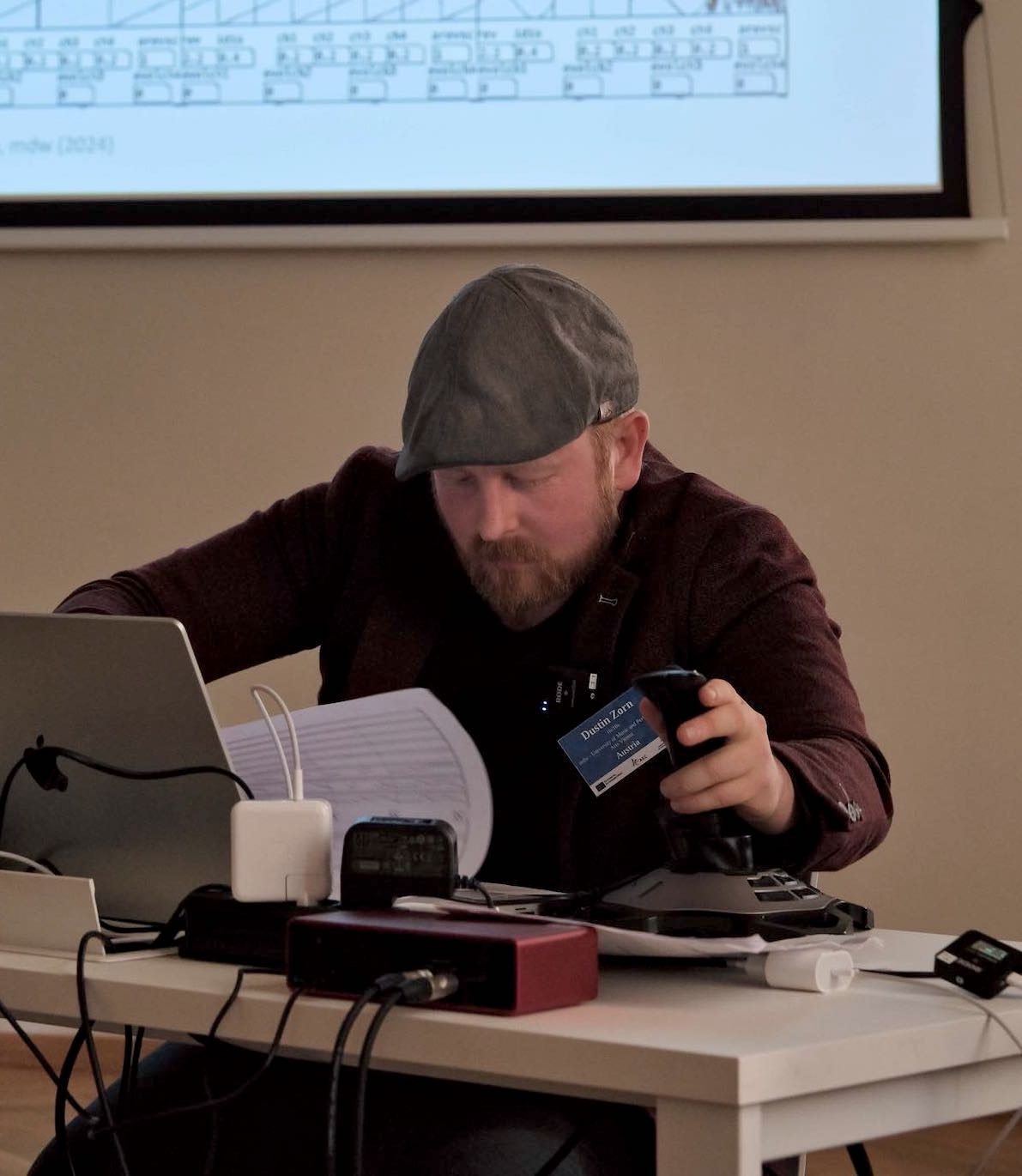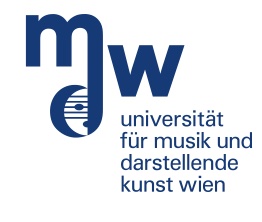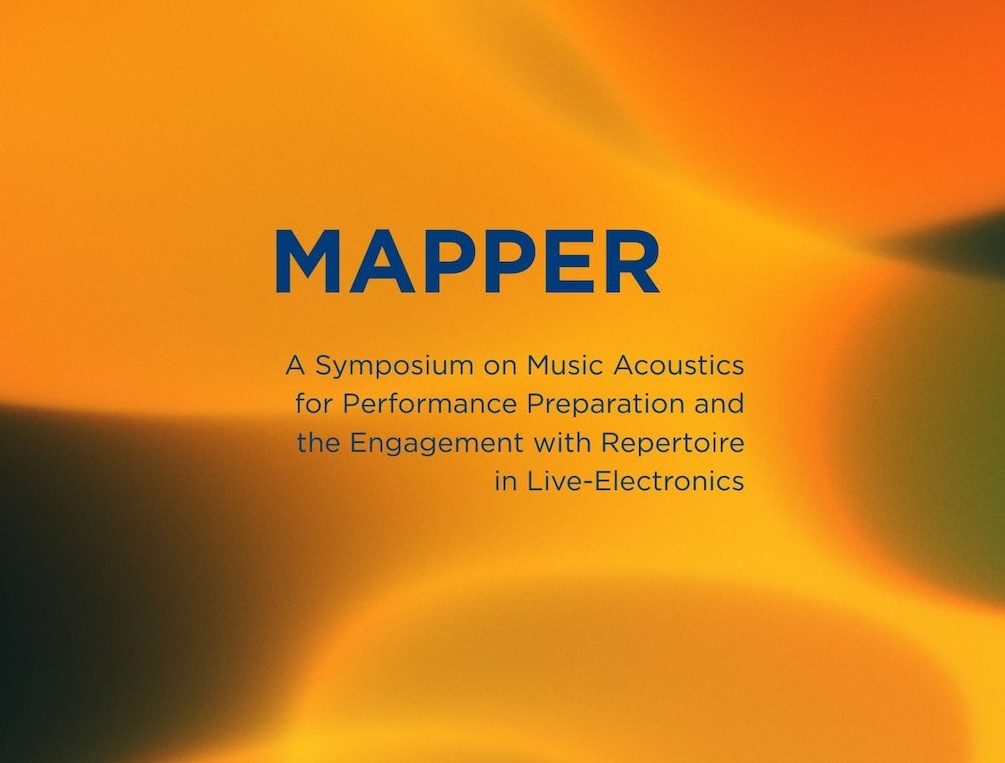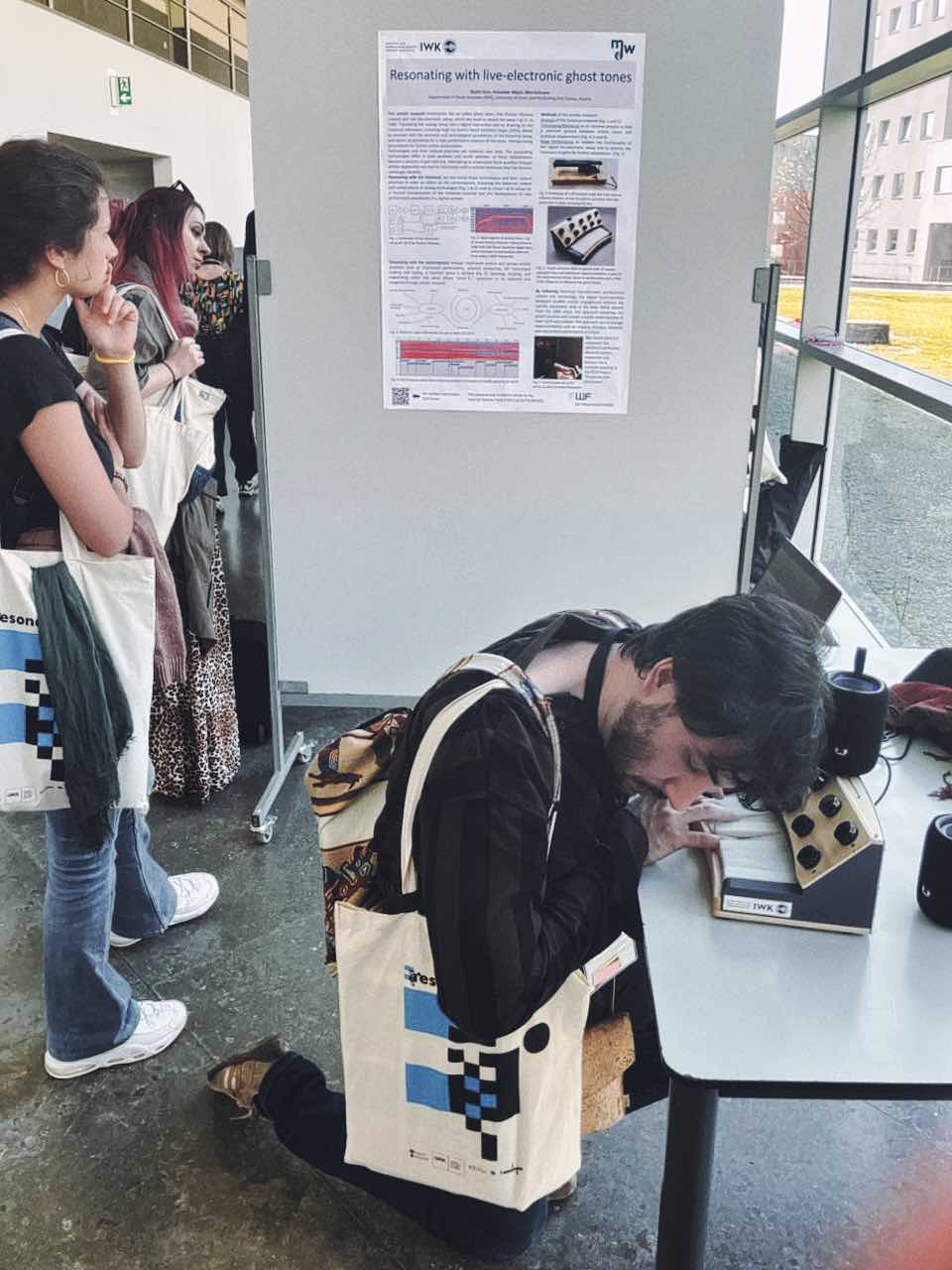AEC European Platform for Artistic Research in Music: 21.-23.3.2024
Written on March 7th, 2024 by AH
Dustin Zorn presented “From Stria to Metastasia – fantastic proliferations of a revived algorithm” at the three-day international conference (21.-23.3.24) “AEC European Platform for Artistic Research in Music” at the Academy of Music (Ljubljana, Slovenia).
Title: From Stria to Metastasia – fantastic proliferations of a revived algorithm
Destruction and creation of algorithms as a creative dichotomy and artistic research procedure to explore interpretative space within computer music repertoire
Research Questions:
1) Can the strategy of exploring old repertoire as a frame of reference for the creation of new repertoire be a successful strategy in the field of live-electronic music and computer music, which traditionally is mostly in search for “new” ways of sound production?
2) Where is a live electronic performance constituted? Is it in the audible result on stage or in the means of its creation?
Abstract:
The performance consists of two live electronic pieces performed by a solo performer. The first piece being “Stria” by John Chowning from 1977, and the second piece being “Metastasia” a new live electronic performance created by Zorn, which is based on the algorithm of the historic computer music tape piece “Stria”. The piece “Stria” is based on a frequency modulation algorithm, fed by strictly mathematically calculated parameters, which produce precisely controlled sound spectra. In 1977 the computed sounds had to be recorded on tape. For the duo live performance, the non-realtime Csound version by Dahan (2007), was rewritten to enable a live performance of the piece using Max/MSP and two MIDI controllers. Furthermore, a performance score was created, based on the list of sound events to coordinate the player actions. This artistic experiment changed the relationship to the piece, as it was not to be perceived passively by an audience observing the glacial movement of the spectra, but the piece was at the fingertips of the performers. It was played by two musicians using live electronic interfaces that control the parameters that drive the algorithm. To achieve this physical connection between the performers and the algorithm, it had to be reduced and altered. This process arguably destroyed the mathematical perfection of the piece, but opened it up to the possibilities of a vibrant performance practice, creating alternative interpretations of the original composition (Zorn & Hofmann, 2023). This dichotomy of destruction and creation is at the centre of the proposed performance. First, a new solo live-electronic interpretation of the historical piece “Stria” will be presented, with a focus on a faithful reproduction of the piece, while confronting it with a different performance context through a specifically designed solo live-electronic setup. Second, the performance of a new piece “Metastasia” takes the ideas and algorithms that emerged from the “Stria” interpretation but allows the material from the old repertoire to proliferate to create new repertoire. The algorithm is altered so that its original functionality to produce a sonic performance that is recognisable as the piece “Stria” becomes destroyed. This opens up a space for artistic explorations. By adopting the historic musical concept of a fantasia and by using the algorithmic organizing principles of Xenakis’s Metastaseis from 1953, the gestural and sonic potential of the algorithm is expanded. The composer/performer is given the freedom to explore the algorithm, its structure and its parametric possibilities. In a partly improvisatory research process, the original algorithm is rewritten to form several proliferations with different functionalities and to map its parameters to a new live electronic setup. The results are analysed by ear and curated to form a musical fantasia that will be presented as the second piece in this performance entitled “Metastasia”.
Funding:
This research was supported by the Austrian Science Fund (FWF): AR-743
References:
Dahan, K. (2007). Surface Tensions: Dynamics of” Stria”. Computer Music Journal, 31(3), 65-74.
Dahan, K. (2007–2010). Reconstruction - ORChestra csound code. (stria.csd + WebPlayer).
Zorn, D., & Hofmann, A. (2023). Exploring interpretations of algorithmic compositions as live electronic performances. A Case Study on Chowing’s ’Stria’ (abstract). In the Programm of Vintage Materialities in Music. Orpheus Instituut, Ghent, BE.



